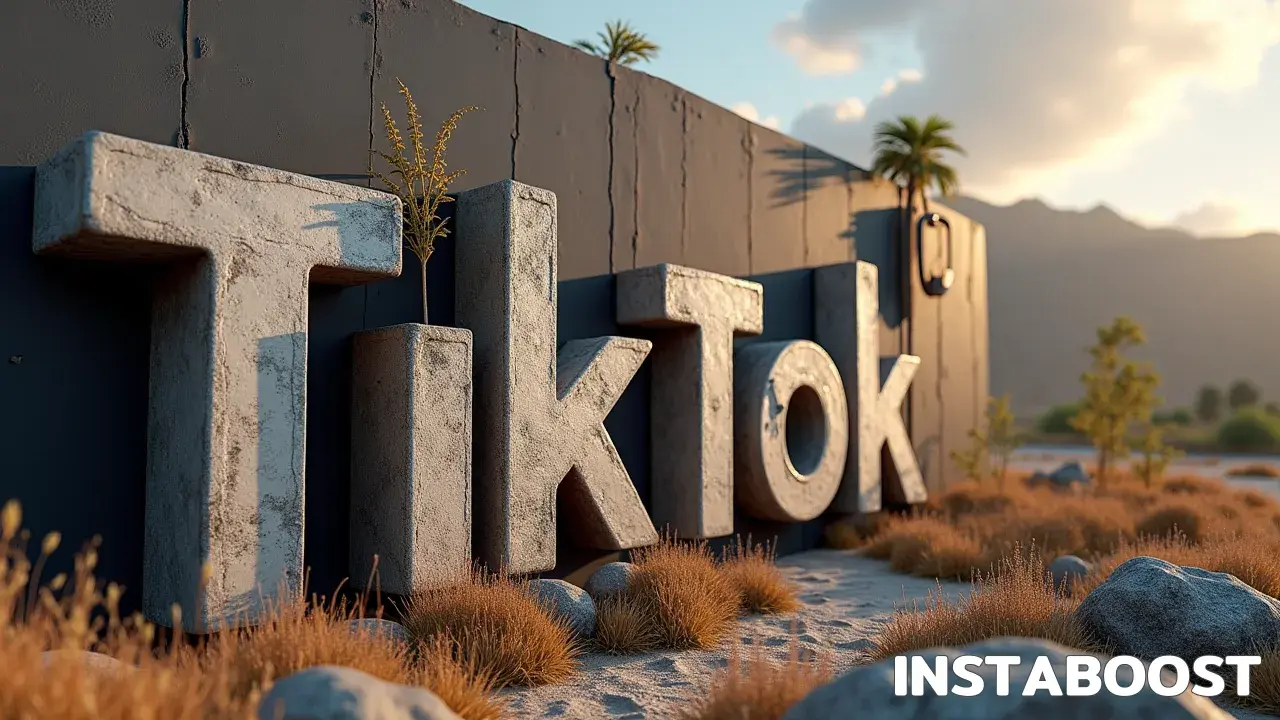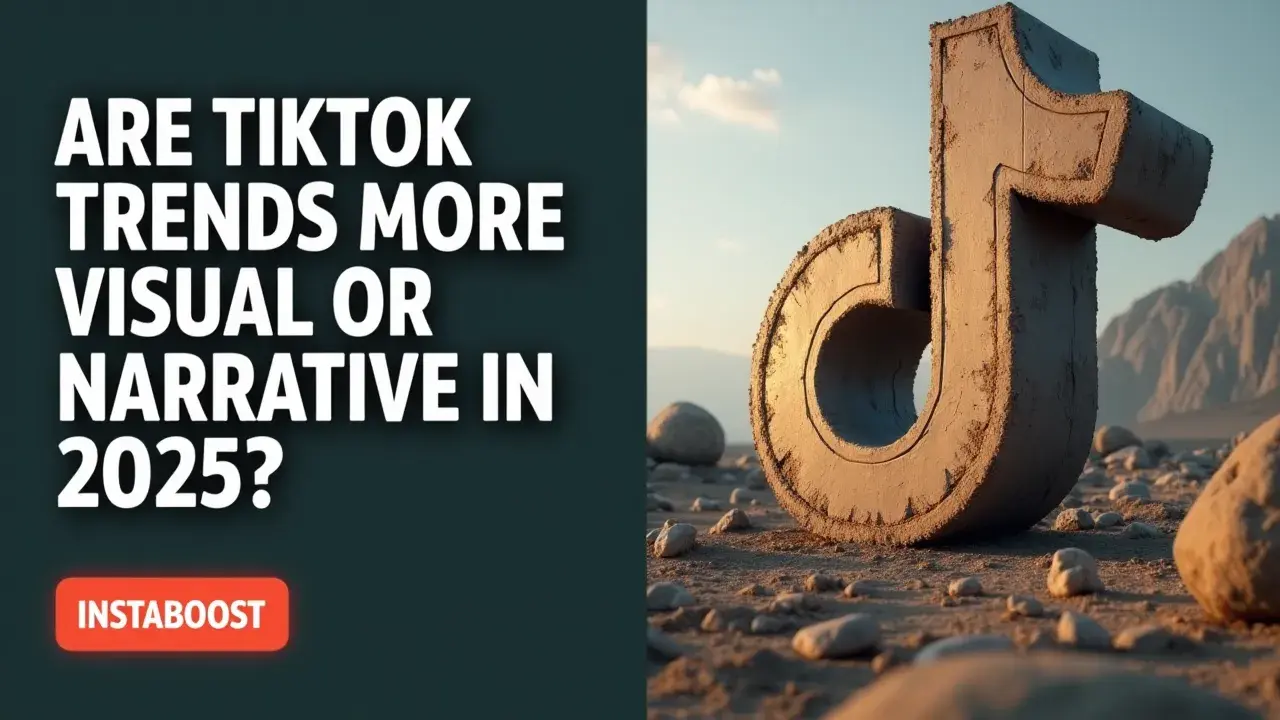Are TikTok Trends More Visual or Narrative in 2025?
TikTok trends in 2025 lean visual, with top performers layering a concise micro-story. Short context lines set expectations, then quick visual payoffs keep attention. Lead with visuals to hook new audiences, and add deeper narrative for returning viewers. Track early signals like first-hour saves, comments, and watch time holds to refine what sticks and when to lean into catchy loops, clear peaks, and repeatable phrasing for sustained traction.
From Scroll-Stop to Thesis: How 2025 TikTok Sells a Point
TikTok still runs on cuts, filters, transitions, and sounds, but by 2025 the thing driving trends is more and more about making an argument. What used to be a loop of vibes is now a loop of claims: people look into the camera, pick a side, and use the tools on-screen to back it up. It’s rhetoric with jump cuts, where each beat pushes the point and each overlay secures a premise.
So asking whether trends are more visual or narrative misses it. The strongest posts tie spectacle to structure so the look does the logical work. A budget-travel clip, for example, doesn’t only show beaches or street food; it stacks receipts, screens records of costs, highlights routes on a map, and pops up prices to lay out a case for value, all timed to a sound that nudges urgency. The format itself carries the story, and meme moves – stitches that answer a claim, duets that test it side by side, greenscreen with headlines or screenshots – act like evidence and counterpoints. Even dances come with on-screen text and caption prompts that state the thesis, so the choreography reads like commentary.
The algorithm reinforces this: watch time favors mini arcs and payoffs, so trends settle into templates that promise a resolution in 20 seconds – setup, turn, proof, tag. That’s why certain sounds matter: the pattern isn’t only catchy; it sets up expectations and cues the viewer for the pivot. As the app matures, the line between visual and narrative collapses into format-as-persuasion, a craft you pick up by osmosis and, sometimes, from quick cheat sheets or tools to succeed on TikTok you stumble across while scrolling. The real contest on the For You Page isn’t who looks the best; it’s who can load a stance into transitions, memes, and face cams so tightly that you take it in before you notice you’ve been moved by it. In 2025, TikTok feels less like spectacle versus story and more like argument built into the design, humming along in the background while you scroll through another clip that lines up its proof, beat by beat, then moves on without fanfare.

Receipts Over Reach
You don’t need a bigger audience – you need a clearer, more honest message. If 2020 TikTok rewarded spectacle, 2025 rewards sourcing. The creators who win aren’t the flashiest; they cite, stitch, and show their work. “Here’s the link,” “source in comments,” and side-by-side duets work like inline citations. On-screen text reads like headings that walk you through an argument. The platform’s grammar – cuts, captions, stitches – has turned into a verification toolkit, and the algorithm seems to like it: watch-throughs go up when a claim is set up, backed up, then closed out.
Trend waves now hinge less on a look and more on a proof pattern. One person makes a claim, another adds context, a third pushes back with counter-clips – the debate becomes the trend. In that way, 2025 TikTok is both more visual and more narrative: visuals are receipts, the narrative is the chain of custody. Even “aesthetic” edits carry footnotes through overlays, product try-ons, or quick data pulls. That doubles as search help, since TikTok search now surfaces videos with clear, scannable claims.
So when people ask if trends are more visual or more narrative, the practical answer is credibility. The visuals that spread are the ones that make a case, and the narratives that stick are the ones you can pause and verify. That’s why keywords like “explain,” “breakdown,” and “myth” rank – not for drama, but because the structure teaches while it entertains and buy tiktok followers cheap often reads as noise against that ethic.
Blueprints Beat Buzz: How to Build Trend-Proof Takes
Vision without a process turns into theatre. In 2025, treat each TikTok like a tiny paper: claim, evidence, counter, takeaway. That setup lets you use visuals without letting them run the show, and it’s why a clear story outlasts flashy edits. Start with a clean thesis in the first two seconds (“Why this sound works on breakup stories”).
Then bring receipts: stitch a take that disagrees, show a short screen recording of the source, overlay one stat, and time cuts so every jump moves the argument forward. Use sounds and transitions like chapter markers – memes pull people in, your structure keeps the point on track, and small signals of credibility matter more than chasing tiktok likes from active users when your framework does the heavy lifting. Run “Receipts Over Reach”: link out, pin sources in the comments, and invite a stitch with a direct prompt (“Disagree? Show a counterexample using this effect”). That lines up with watch-time logic and turns your video into a small debate hub that grows with every interaction.
To balance visuals and narrative, follow a simple rhythm: hook (2s), proof (6 – 10s), counter or caveat (4 – 6s), synthesis (3 – 4s), loop. The platform tends to reward it because each beat gives a reason to stay. For search, write your title and caption for intent (“TikTok trends visual vs narrative,” “how to structure a take”), then use on‑screen text to walk viewers through the skeleton. You end up with videos that look good, argue better, and stick around because people save frameworks more than aesthetics, and that’s the part worth building on.
When Visuals Lie, Narrative Survives
Every step looked logical until I tried to follow it. That’s the trap in this hyper-visual TikTok moment: clean transitions, tight cuts, slick templates that make weak ideas feel solid. The fix isn’t “be more visual.” It’s “be more persuasive.” The creators who keep winning show their sources and cut clips like arguments: claim, evidence, counter, takeaway. When a dupe cam hides price tags or a metrics montage crops the time horizon, a two-second thesis (“This graph is cherry-picked”) and a stitched source break the spell. The folks who are good at trends treat format as delivery, not the point. Visuals can show the beat drop or the outfit swap; the narrative explains why it matters, where it stops, and what assumption the montage skipped.
If TikTok is a tug between look and plot, this year is drawing the line: visuals get the click, narrative earns the save. You can see it in sound adoption too – the same audio works for breakup skits and creator economy explainers, but the ones that state a thesis early and drop a source in comments keep compounding. That’s search behavior catching up: people are literally typing “TikTok argument structure” and “are TikTok trends more visual or narrative,” then rewarding accounts that make a case on camera, while others chase hacks to get tiktok views without realizing the algorithm prefers retention rooted in reasoning. So use arrows, subtitles, side-by-sides – use them as rhetoric – but don’t let polish smuggle in bad logic. The blueprint beats the buzz, because a story holds up when someone stitches it and pushes back and here.
Closing the Loop: Make the Trend Prove Itself
You can’t unsee it. So what do you do with it? Treat 2025 TikTok like a small lab bench: visuals are the tools, the story is the plan. If you’re trying to figure out whether trends are skewing visual or narrative, here’s a practical way to work it out: build your posts so people can test you in real time. Start with a clear claim about the trend that could be proven wrong (“This CapCut works because it hides weak claims”), then show your evidence: stitch the original, mark the beat drops, screenshot the comments and point to the patterns. Run a counterexample using the same template on a solid idea.
End with a simple rule someone can try on their own For You Page. That framing doesn’t box you in; it makes the idea repeatable – and repeatable is what the system tends to reward. One more shift: don’t judge by watch time alone. Track persuasion signals – saves, stitches that borrow your logic, comments that restate your point in their own words. As those go up, your visuals are doing the job of supporting the story instead of covering for it.
So are trends more visual or more narrative now? Both – but the narrative sets the constraints, and the visuals do the proving. If you want something you can search and use, call it “argument-first editing.” Keep it as a pre-post checklist. If a shot doesn’t move the claim, the evidence, the counter, or the takeaway, it’s probably spectacle. Cut it, or give it a line to say. Then the trend doesn’t just look good – it holds up when someone pauses, replays, and tries to build on it and get noticed via TikTok shares without losing the thread that made the argument testable in the first place.















